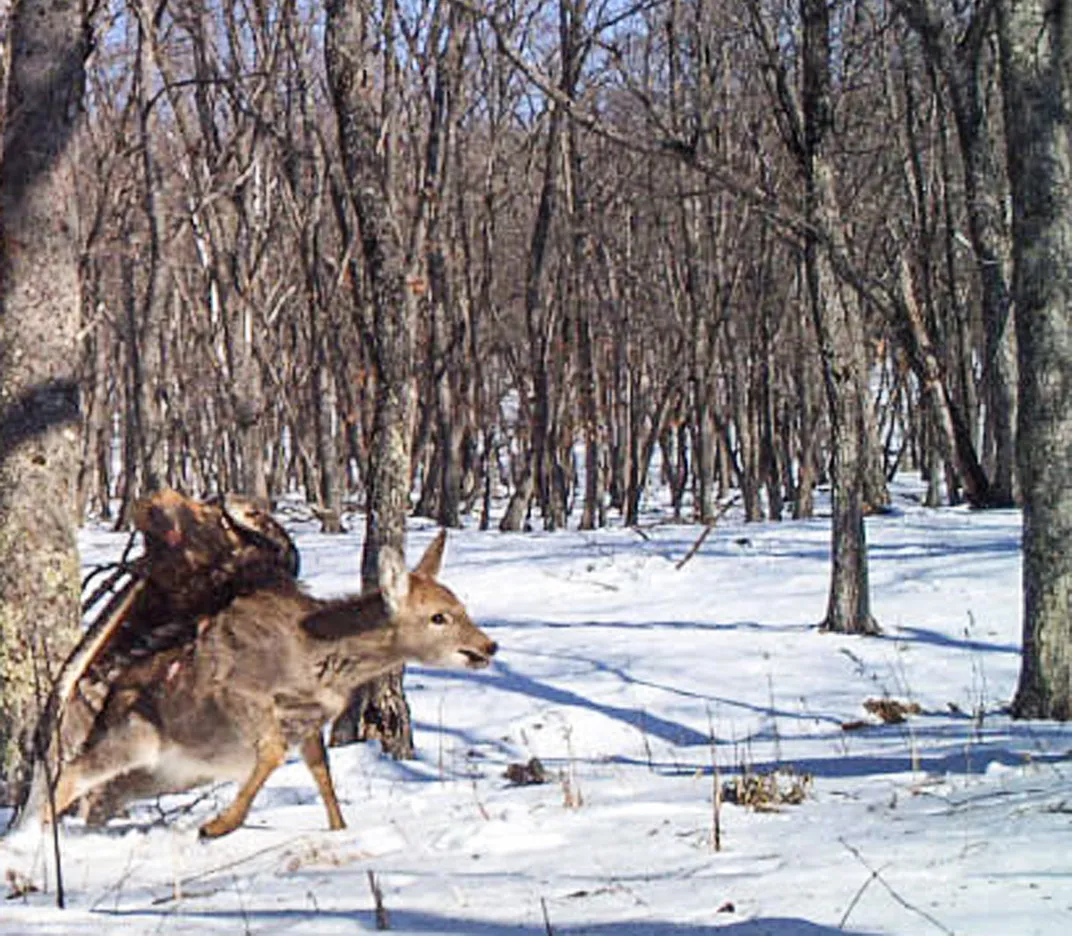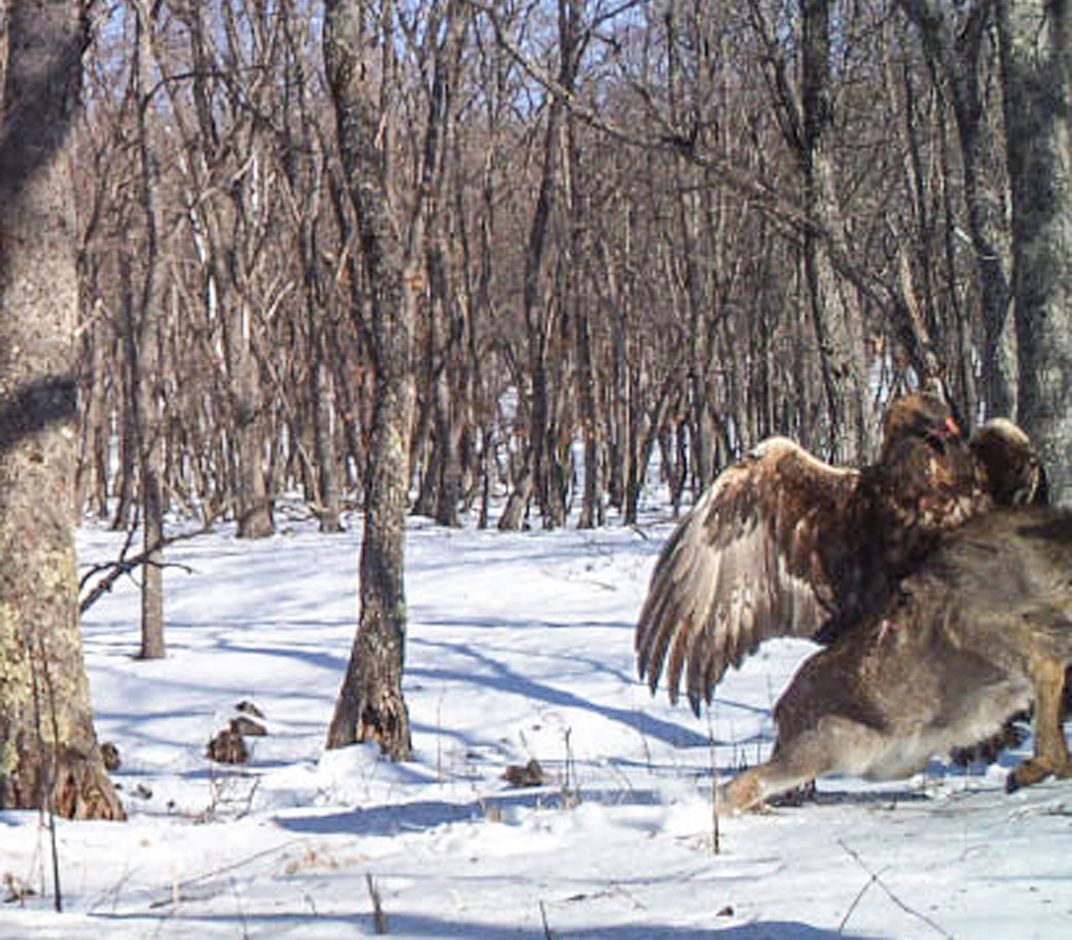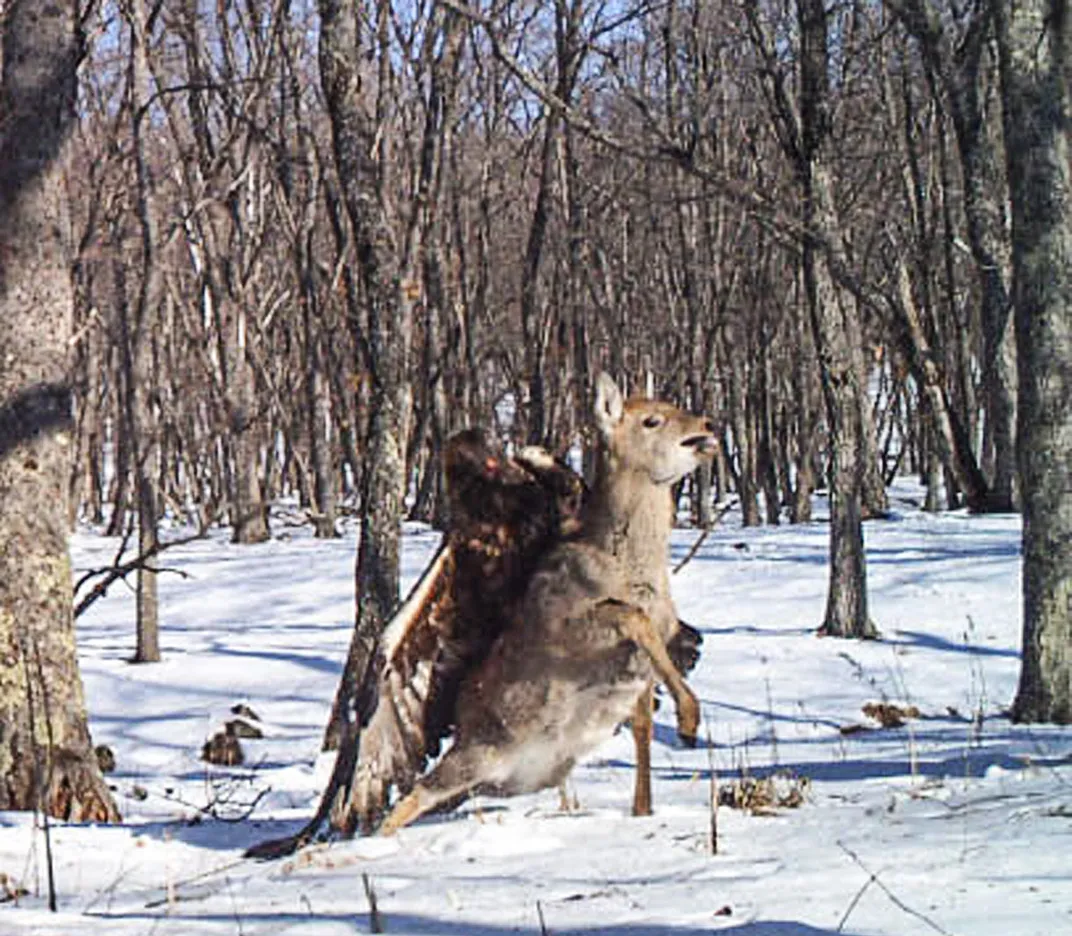The Deadly and Devious Golden Eagle
Rare photos of a golden eagle attack illustrate the predator’s legendary hunting techniques
/https://tf-cmsv2-smithsonianmag-media.s3.amazonaws.com/filer/d3/e6/d3e6b43c-ccc6-46ae-9833-c748418677a5/01-royal-raptor-deer-eagle.jpg)
Something about the dead deer didn’t seem right to biologist Linda Kerley. The carcass, splayed out in the snow of Russia’s Lazovskii State Nature Reserve, was picked clean save for hide and bone. But Kerley saw no signs that a large predator—such as the Amur tigers that she had come to study—had brought the animal down. Based upon the tracks still visible in the snow, it looked as if the deer had been running and suddenly keeled over.
Kerley only discovered what had really happened after she returned to her camp to check on a remote camera that had been placed in the forest. In photos taken a couple of weeks before, she watched as the deer lurched across the snow. On its back, wings splayed, bill and talons slashing, was a golden eagle.
Nobody had ever documented a golden eagle killing a deer in this region. But Kerley, who, along with Jonathan Slaght of the Wildlife Conservation Society, published a report of the incident in the Journal of Raptor Research, knew what the massive birds—with wingspans up to seven feet—were capable of. She had grown up in eastern Oregon and done her graduate work in Wyoming, places where golden eagles live. “That an eagle would take down a deer? I wasn’t shocked,” she says.
Named for the distinctive gold-colored feathers on the nape of its neck, the golden eagle can deploy up to seven distinctive hunting techniques, each one corresponding to the size and speed of its prey. When attacking slow-flying birds, for instance, the golden eagle soars upward and then rapidly descends, literally knocking the birds out of the sky. If it’s stalking large animals, such as deer, it flies low to the ground, waiting for the right moment to strike with a sustained grip of its talons.
The golden eagle’s fearsome reputation earned it respect, and even reverence, throughout history. In Greek mythology, it was the companion to Zeus, serving as his bearer of messages or omens. Among falconers in medieval Europe, it was the “royal eagle,” its use reserved for kings. But in modern times, the golden eagle’s prowess as a hunter was almost its undoing. Golden eagles typically prey upon small- and medium-sized animals, such as geese, rabbits and reptiles. But its occasional attacks on bigger animals—lambs, deer and even juvenile brown bears—led ranchers in the United States to believe that the bird was depleting their livestock. Between 1941 and 1961, some 20,000 golden eagles were shot from airplanes. In 1962, following studies that countered claims that the eagles were a threat to ranchers’ livelihoods, the government designated them a federally protected species.
Though golden eagles are no longer officially persecuted, they still face threats, poisoned by the lead shot they eat from scavenged carcasses, or bludgeoned by the wind-turbine blades they sometimes fly into.
The most pressing issue, however, is habitat loss. Golden eagles are creatures of open space—the shrub-steppe, the prairie, the tundra. When these lands are converted to farmland, paved over or otherwise lost, small animal populations decline and the eagles have no reason to stay.
“Golden eagles are top-of-the-food-chain predators, so what happens to them reflects what’s happening in the ecosystem,” says Jim Watson, a biologist with the Washington Department of Fish and Wildlife who has studied the birds since the 1970s. “It’s important for us to understand them. They epitomize what is really wild.”


